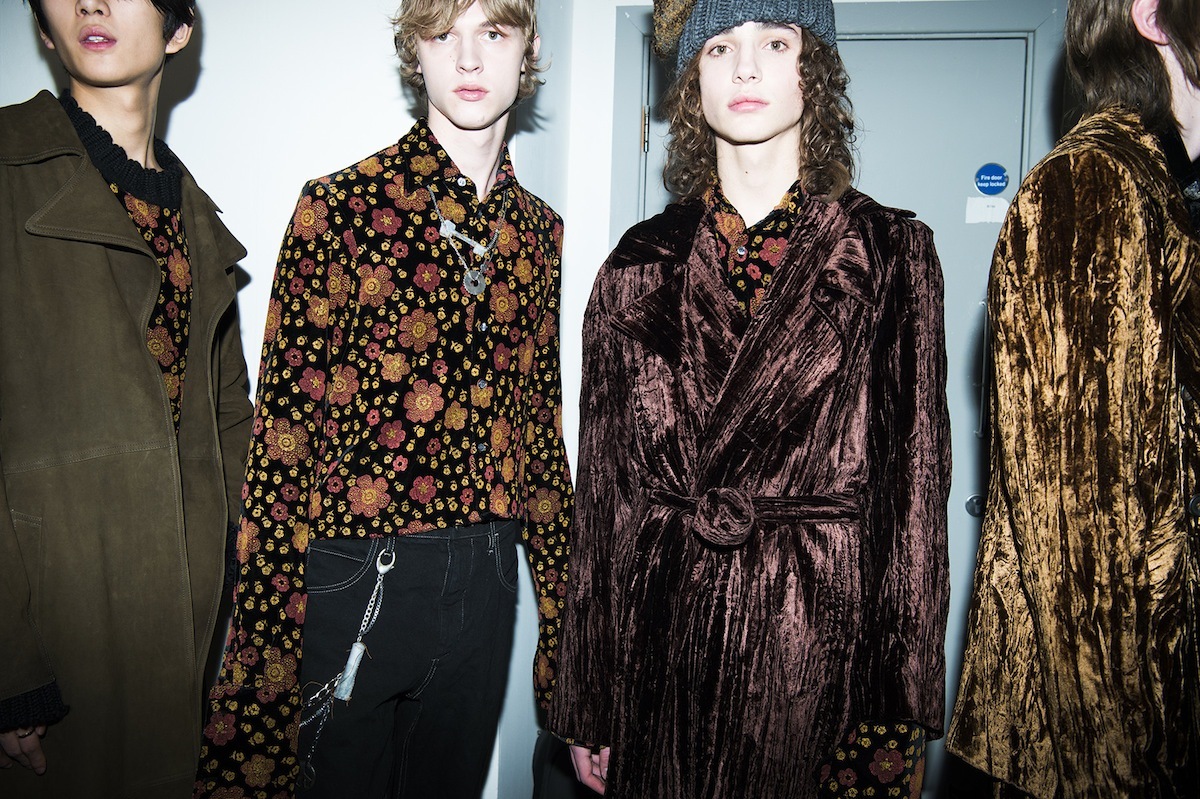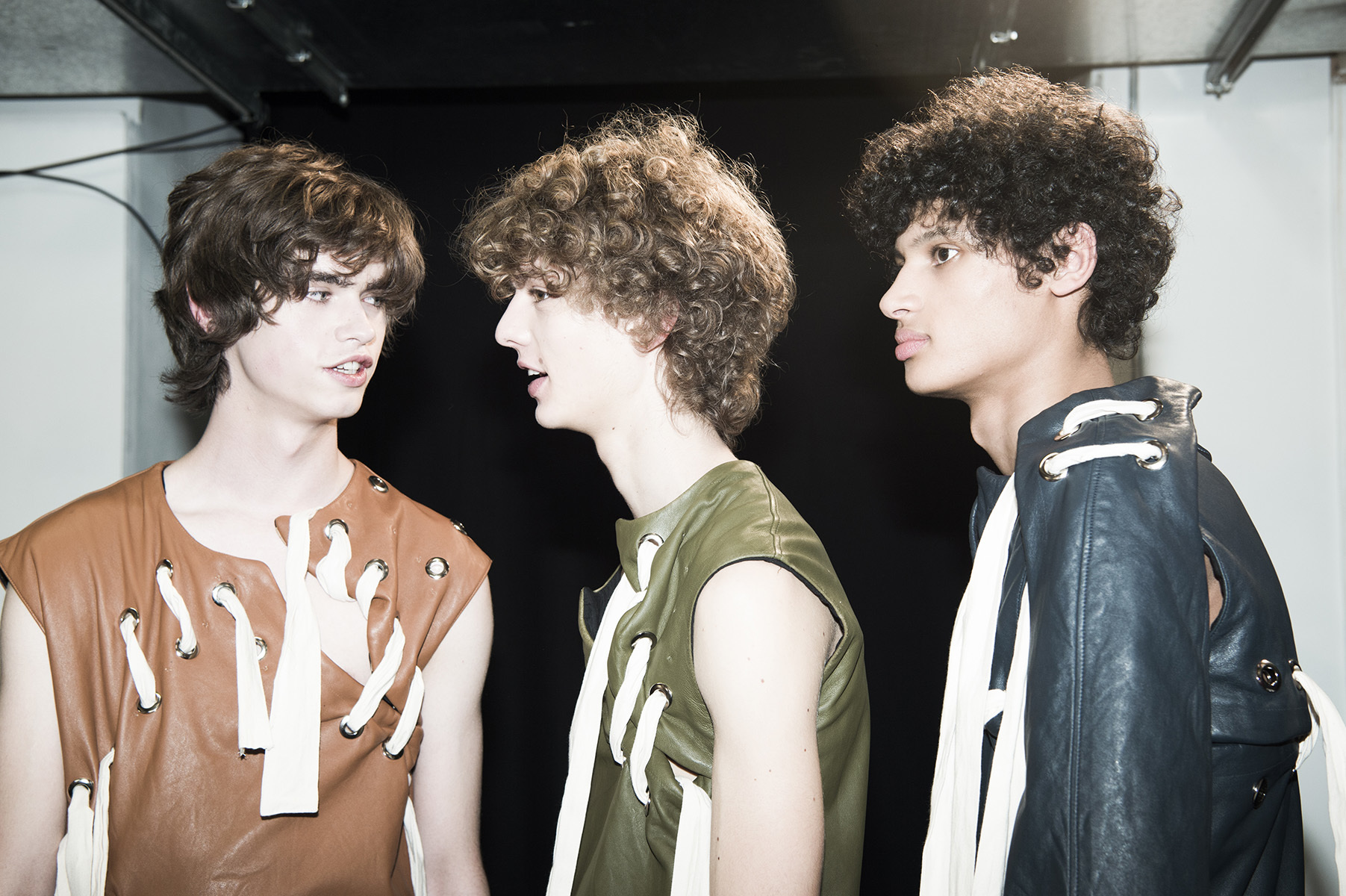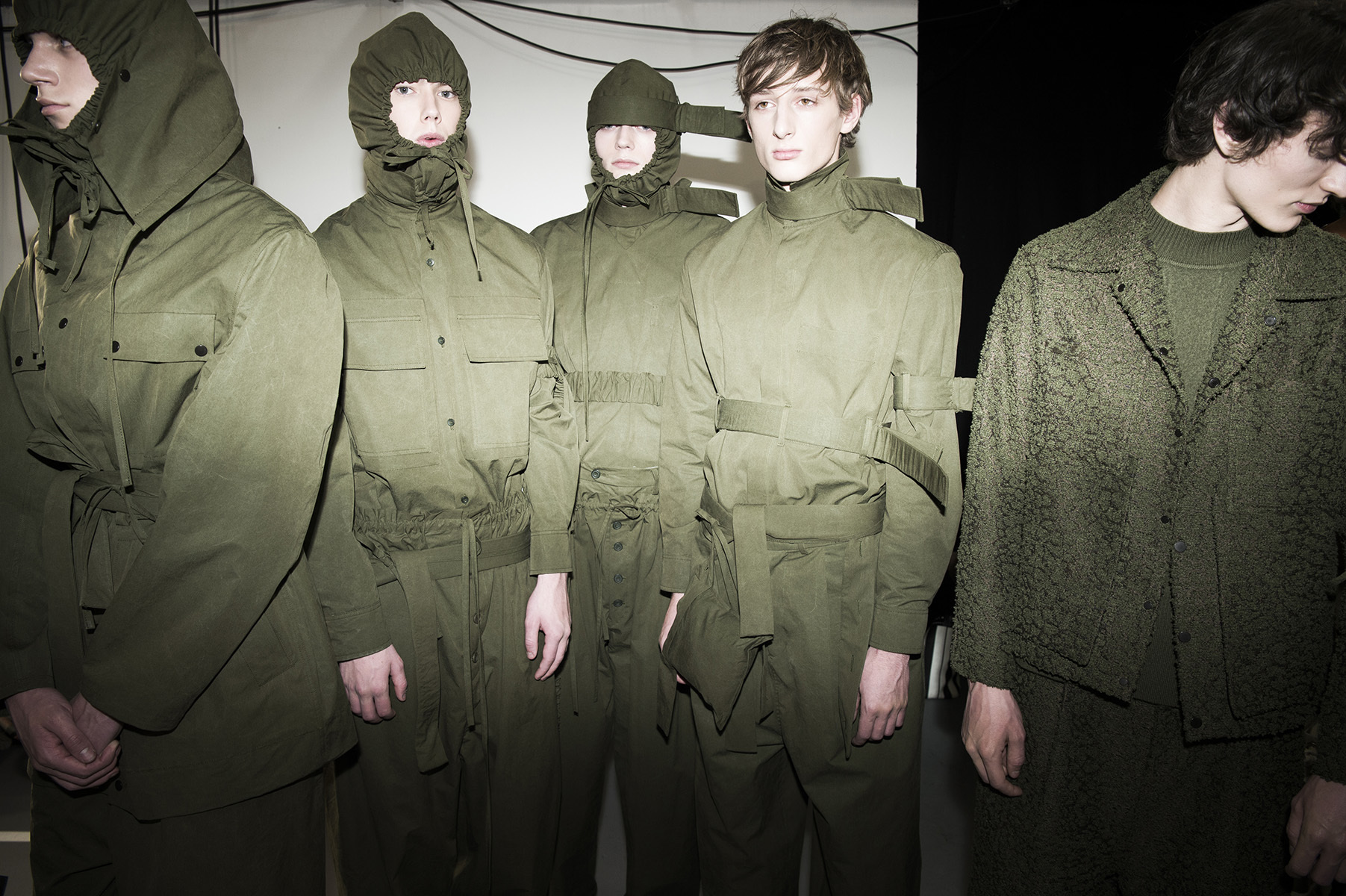The Gucci moment currently taking place in fashion courtesy of the messianic Alessandro Michele made it to London on the first day of the fall/winter 2016 men’s shows. When Michele first debuted his romantic opulence and religious decadence in a menswear collection exactly a year ago, it created the perfect backdrop to the gender-neutral blood that would pump through the veins of popular culture in 2015. (See: Caitlyn Jenner, Laverne Cox, Andreja Pejic, Jaden Smith, Lana Wachowski, The Danish Girl, and all of K-Pop.) Backed up by John Galliano’s work at Maison Margiela, Michele’s vision has imagined what gender-neutral fashion apparently looks like: a sumptuous eyeful of sensory overload that pushes all the forbidden buttons, from religion to sex to age to race, and effectively neutralizes them. It’s absolutely delightful, too.

Those elements — which have more than a little in common with the references Dries Van Noten has worked with over the past three decades — defined the shows that kicked off London Collections: Men on Friday. “It just felt like the right mood,” Gordon Richardson said after his beautiful Topman show, which could have been the sporty weekend wardrobe of a 19th century bohemian aristocrat, perhaps with a playboy tendency beyond his time. “You use all those clichés like leisurewear and luxe and louche,” he said of the regal fabrics (silks, velvets, suede) and opulent patterns and motifs that characterized the collection, “but it really was the starting point of this. Where do these clothes belong? They can belong on the street or belong at home, or they can belong in both.” If there was a feminine quality to Topman’s limousine sportswear, it’s at the very heart of what’s happening in men’s fashion right now.

More than ever before in menswear — where Jean Paul Gaultier proposed skirts as far as back the 1980s — it now feels like taboos are finally being broken, phobias demolished, and conformist roles wiped out. Just look at the current mainstream masculine tastemakers and what they wear: Justin Bieber, Kanye West, Harry Styles. “You get a skater boy going out in the street wearing the kind of clothing you wear at home—just tracksuits and leisurewear, and you’ve got to move that on. For me, that’s where this realm lies, in terms of that luscious luxury,” Richardson said. “I even forget there is such a thing as gender nowadays,” Lulu Kennedy quipped after the three shows she’d picked for this year’s MAN. It was, nonetheless, a heavily debated theme in the collections, where Rory Parnell Mooney — the product of an Irish catholic school — swathed his boys in hooded religious shrouds, and splashed the words “Nancy boy” across them.
Parnell Mooney’s silhouette often neutralized the gender-defining attributes of the male body itself, which only added to the statement—and the impeccable quality of his materials didn’t make it any worse. With a name like Loverboy, Charles Jeffrey’s label pretty much puts the cards on the table before the first exit walked out on the runway, but that was the point. It was maximalist, opulent, historicist punk in the tradition of Vivienne Westwood and—indeed—Gaultier: a loud and proud statement of individuality to close the MAN shows.
Loud and proud is something Grace Wales Bonner does with quiet panache, and when she opened MAN by sending a Nigerian-Irish string harpist player out to take his seat, she’d set the scene for a ceremonious experience. Her collection was based on black spirituality, continuing the young designer’s exploration of black culture in a European framework.

Mostly-black models in louche 1970s tailoring and crystal-encrusted princely garments such as a sporty zip top bowed to the harpist and the crosses placed in front of him as they walked out, evoking a decidedly un-Western idea of ritual. It was exactly in the effortless fusion of Western tailoring and African tradition that Wales Bonner made her point. Of all the designers in London, she is taking the biggest risk when it comes to breaking down stereotypes, whether they’re gender or race related, because the subject matter with which she deals is so sensitive. That’s why it was heart-warming to look at people’s comments on pictures from Wales Bonner’s show on Instagram after it had concluded, because there wasn’t a single mention of the cast—only the clothes. However Wales Bonner is doing this, she’s doing it right. “They all reference really important culture,” Kennedy said of her trio. “Whether it’s London culture or different cultures.”
Backstage, Nasir Mazhar said that the current gender movement in our culture wasn’t something that affected him. It was hard to believe, but perhaps that’s the nature of this evolution: you don’t think, you just do. Without the changing attitudes towards the meaning of sexy in both fashion and on the streetwear scene, however, Mazhar’s fetishized, deshabillé sportswear would hardly be the hot runway ticket it is. Sexy was also the word of the season at Craig Green, but if his undone maxi-laces — barely holding garments together over the models’ torsos — established a certain naughty mood, it was quickly challenged by the sickly medical references found in Green’s use of overly washed fabrics, wrapped bedspreads, and the overall sense of ‘mental asylum chic’ flowing through the collection.

“It’s institutions and the idea of a clinical throwaway thing,” Green confirmed after the show. “The pillows were based on the idea of boxing wall bags.” Most characterizing for the collection were the anoraks, tightly drawstringed around the face as a form of self-protection. In Green’s very own Torture Garden, they functioned as a kind of shield for the self-expression we’re effectively all forced into practicing in these great times of change. Fashion — and men’s fashion in particular — is at that crucial point right before we finally reach a state of anything-goes. Alessandro Michele might be leading a revolution at Gucci and Jaden Smith might be wearing a skirt in the new Louis Vuitton campaign, but the brilliance of this budding reality of gender-neutrality doesn’t make it any less intimidating.
Credits
Text Anders Christian Madsen
Photography Jason Lloyd Evans
